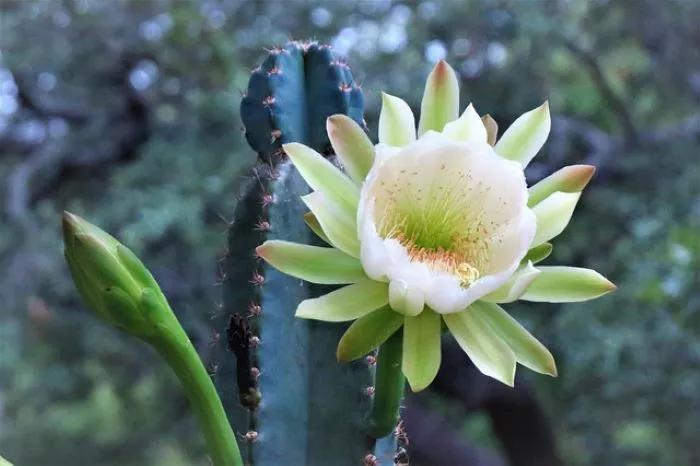Flowering is one of the most fascinating aspects of plant biology. Flowers play a crucial role in the reproductive cycle of flowering plants, also known as angiosperms. Understanding what makes plants flower involves exploring the complex interactions of environmental factors, hormonal signals, and genetic mechanisms. This article will provide a detailed overview of the processes that trigger flowering, the significance of flowers, and the factors that influence this vital stage in a plant’s life cycle.
The Process of Flowering
The process of flowering is known as flowering induction. It involves a series of physiological changes that lead to the development of flowers. This process can be influenced by several factors, including light, temperature, and the age of the plant.
One of the primary triggers for flowering is photoperiodism, which is the plant’s response to the duration of light and darkness in a 24-hour cycle. Plants can be classified into three categories based on their photoperiodic response: short-day plants, long-day plants, and day-neutral plants.
Short-day plants flower when the days are shorter than a critical length. Examples include chrysanthemums and poinsettias. Long-day plants, on the other hand, flower when the days are longer than a specific length. Examples include spinach and lettuce. Day-neutral plants do not rely on day length and can flower regardless of light conditions. Examples include tomatoes and cucumbers.
The Role of Temperature
Temperature is another critical factor that influences flowering. Many plants require a period of cold temperatures, known as vernalization, to induce flowering. This process is essential for species that grow in temperate climates, where winter conditions help to synchronize flowering with the appropriate growing season.
During vernalization, exposure to cold temperatures triggers hormonal changes within the plant. These changes prepare the plant for flowering when warmer temperatures return. This adaptation ensures that flowering occurs when conditions are favorable for seed development and survival.
Hormonal Regulation
Hormones play a vital role in the flowering process. Several plant hormones, including gibberellins, auxins, and cytokinins, are involved in regulating flowering. Gibberellins are particularly important for promoting flower development. They stimulate the growth of flower buds and enhance the transition from vegetative growth to flowering.
Auxins and cytokinins also contribute to the flowering process by influencing cell division and differentiation. The balance of these hormones determines the timing and development of flowers. Environmental signals, such as light and temperature, can affect hormone levels, further influencing the flowering process.
Genetic Factors
Genetics is another crucial aspect of flowering. The flowering process is regulated by specific genes that respond to environmental cues. These genes are part of complex networks that control the timing and development of flowers.
One well-studied group of genes involved in flowering is the floral meristem identity genes. These genes determine when a plant switches from producing leaves to producing flowers. The interaction between these genes and environmental signals ultimately dictates the timing of flowering.
In addition to the floral meristem identity genes, other genes regulate the development of flower structures. These genes control the formation of petals, sepals, stamens, and carpels, ensuring that flowers develop correctly.
Significance of Flowers
Flowers serve several essential functions in the life cycle of plants. The primary purpose of flowers is reproduction. Flowers contain the reproductive organs of plants, enabling pollination and the production of seeds. Pollination can occur through various means, including wind, water, and animal pollinators such as bees, butterflies, and birds.
In addition to reproduction, flowers play a crucial role in the survival of plant species. By attracting pollinators with their colors and scents, flowers increase the likelihood of successful pollination. This, in turn, leads to the production of seeds and the continuation of the species.
Flowers also contribute to the overall biodiversity of ecosystems. They provide food and habitat for a wide range of organisms, including insects, birds, and mammals. The presence of diverse flowering plants supports healthy ecosystems and promotes ecological balance.
Factors Influencing Flowering
Several factors can influence the timing and success of flowering. In addition to light, temperature, and hormones, water availability and soil nutrients also play significant roles. Plants that receive adequate water and nutrients are more likely to flower successfully.
Stress factors, such as drought or extreme temperatures, can delay or inhibit flowering. Some plants may respond to stress by prioritizing survival over reproduction, postponing flowering until conditions improve. This adaptability ensures that plants can survive in varying environments.
Human activities can also influence flowering. Changes in land use, climate change, and pollution can affect the environmental conditions necessary for flowering. Gardeners and farmers often manipulate these factors to encourage flowering in ornamental and crop plants.
Conclusion
In conclusion, the process of flowering is a complex interplay of environmental factors, hormonal signals, and genetic mechanisms. Photoperiodism, temperature, and hormonal regulation are key factors that trigger flowering in plants. Flowers play a vital role in the reproductive cycle of plants, contributing to biodiversity and the survival of species. Understanding what makes plants flower provides insight into the intricate relationships between plants and their environments. This knowledge is essential for gardening, agriculture, and conservation efforts, ensuring that we can support healthy ecosystems and promote the beauty of flowering plants.


